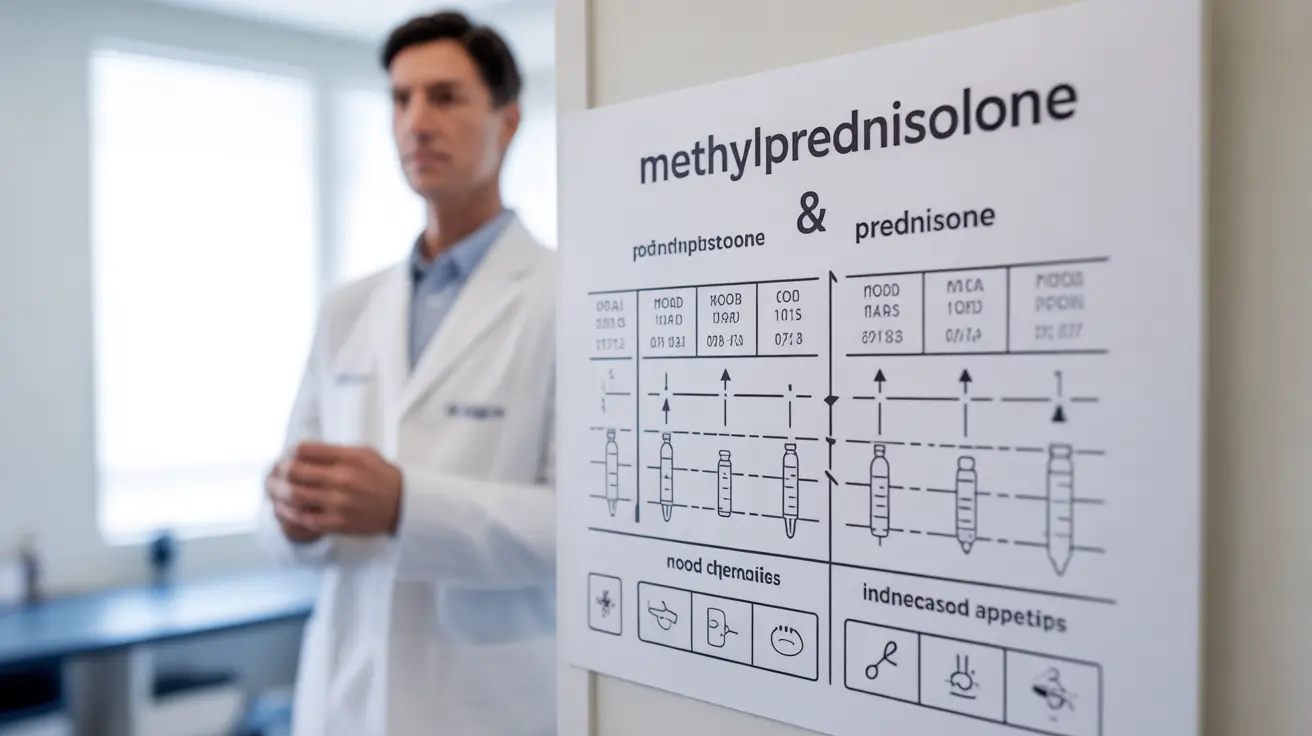When it comes to managing inflammation and autoimmune conditions, methylprednisolone and prednisone are two commonly prescribed corticosteroid medications. While they share similar therapeutic effects, understanding their distinct characteristics can help patients and healthcare providers make informed treatment decisions.
In this comprehensive guide, we'll explore the key differences between these medications, their specific uses, and important considerations for safe and effective treatment.
Understanding the Basics of Both Medications
Methylprednisolone and prednisone belong to the glucocorticoid class of medications, which work by suppressing the immune system and reducing inflammation throughout the body. Both medications are synthetic versions of cortisol, a natural hormone produced by the adrenal glands.
Key Differences in Potency and Duration
One of the primary distinctions between these medications lies in their relative potency and duration of action. Methylprednisolone is generally considered more potent than prednisone, with 4mg of methylprednisolone being approximately equivalent to 5mg of prednisone.
The enhanced potency of methylprednisolone often means that lower doses can achieve similar therapeutic effects, potentially reducing the risk of certain side effects.
Administration Methods and Flexibility
Oral Administration
Both medications are available in oral form, typically as tablets. Prednisone is most commonly prescribed as an oral medication for daily use, while methylprednisolone is available in various formulations.
Injectable Options
Methylprednisolone offers the advantage of injectable forms, including intramuscular and intravenous preparations. This flexibility in administration can be particularly beneficial for patients requiring rapid relief or those unable to take oral medications.
Treatment Applications and Effectiveness
Autoimmune Conditions
Both medications are effective in treating various autoimmune conditions, including rheumatoid arthritis, lupus, and multiple sclerosis. Methylprednisolone is often preferred for acute flares due to its higher potency and availability in injectable forms.
Respiratory Conditions
For asthma and other respiratory conditions, both medications can be effective. However, methylprednisolone's injectable form makes it particularly useful for managing severe asthma attacks in hospital settings.
Managing Side Effects
Both medications can cause similar side effects, including weight gain, mood changes, increased blood sugar, and bone density loss. However, the risk and severity of side effects often correlate with the dose and duration of treatment.
Short-term Side Effects
Common short-term effects include:
- Increased appetite
- Mood swings
- Sleep disturbances
- Fluid retention
- Elevated blood pressure
Long-term Considerations
Extended use of either medication requires careful monitoring due to potential complications such as:
- Osteoporosis
- Increased infection risk
- Adrenal suppression
- Diabetes risk
- Skin thinning
Safe Usage Guidelines
To minimize risks while maximizing benefits, healthcare providers typically:
- Prescribe the lowest effective dose
- Use short-term courses when possible
- Implement tapering schedules when discontinuing
- Monitor patients regularly for side effects
- Provide supplementary treatments to prevent complications
Frequently Asked Questions
What are the main differences between methylprednisolone and prednisone in treating inflammation? Methylprednisolone is more potent than prednisone, requiring lower doses for similar effects. It's available in both oral and injectable forms, while prednisone is primarily taken orally. Methylprednisolone often provides faster relief due to its higher potency.
How do the side effects of methylprednisolone compare to those of prednisone? Both medications share similar side effect profiles, but the risk and severity often depend on dosage rather than the specific medication. Due to methylprednisolone's higher potency, lower doses may be needed, potentially reducing side effect risk.
When is methylprednisolone preferred over prednisone for autoimmune conditions like rheumatoid arthritis? Methylprednisolone is often preferred for acute flares and severe symptoms due to its higher potency and injectable options. It's particularly useful when rapid relief is needed or when oral medications aren't practical.
How should methylprednisolone and prednisone be used safely to avoid long-term risks? Safe usage involves using the lowest effective dose for the shortest necessary duration, following prescribed tapering schedules, regular monitoring, and taking preventive measures against known side effects.
Can methylprednisolone be administered as an injection, and what are the benefits compared to oral prednisone? Yes, methylprednisolone can be given as an injection, offering advantages such as faster onset of action, bypass of digestive issues, and better absorption. This makes it particularly useful for severe symptoms or when oral medication isn't suitable.




